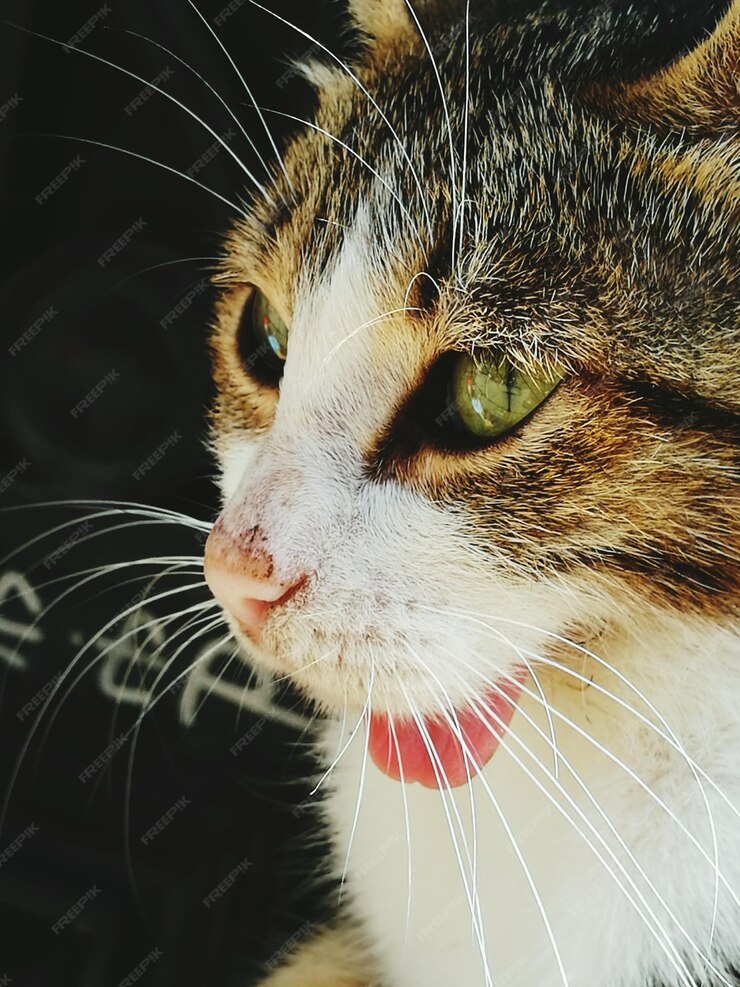When Cat Drooling is Concerning

(Photo courtesy of Freepik.com)
Nothing is more contenting than the sight of relaxed and happy cats, “making biscuits,” purring, and often drooling while their loving owners pet, pet and pet them. (Photo courtesy of Freepik.com)
But sometimes their drooling, especially if it’s excessive, can be concerning. Below are some common causes for such heavy drooling.
Dental issues: Conditions such as gingivitis, tartar buildup and tooth abscesses can cause cats great discomfort, leading to drooling. These conditions may also be accompanied by bad breath, difficulty eating or visible plaque on their teeth.
Emotional stress: Cats experiencing emotional stress will often drool excessively. Stressful situations such as loud noises like fireworks and/or thunderstorms, the addition of a new family pet and moving into a new home are some of the most common triggers.
Illnesses and infections: Among the culprits responsible for excessive drooling are illnesses affecting their upper respiratory system, feline calicivirus, bacterial infections, rabies and gastrointestinal problems, including inflammatory bowel disease or liver disorders – all of which may be accompanied by other symptoms such as coughing, sneezing, lethargy or vomiting.
Nausea: Nausea, whether as the result of changes in diet, “dietary indiscretions” or motion sickness, can often cause cats to drool. Usually a reflex to the sensation of feeling sick, it’s often accompanied by decreased appetite, lethargy and/or lip licking.
Injuries or trauma: Injuries to the mouth or facial area in general, whether from a fall, a fight with another cat or an accident, can also cause drooling. Because these kinds of injuries may not always be visible immediately, it’s important to watch for other signs of distress and/or pain.
Unpleasant tastes or ingested toxins: Cats may drool in response to ingesting something either distasteful or toxic such as certain plants like lilies, household cleaners or medications – their way of trying NOT to swallow these harmful substances.
If any of the above sound frighteningly familiar, an immediate visit to the vet with your kitty is vital – both for an accurate diagnosis and the appropriate treatment. Your vet will give your cat a thorough physical examination and check her mouth for any dental issues, signs of injury and/or any foreign objects. Depending on these initial findings, diagnostic tests may be required, among them, blood tests to check for an infection, x-rays or an ultrasound for a closer look at her internal organs, and specific tests for infectious diseases. A detailed dental examination may also be needed, usually requiring sedation to allow for a complete evaluation of her teeth and gums.
Treatment options: If dental problems are “at the root” of your cat’s drooling, her treatment will, in all likelihood, involve a deep dental cleaning, tooth extractions if required, and/or medication for infections and/or pain relief.
For stress-induced drooling, environmental modifications may need to be addressed, and if that doesn’t work, your cat may be prescribed pheromone therapy, mild sedatives and/or anti-anxiety medications.


